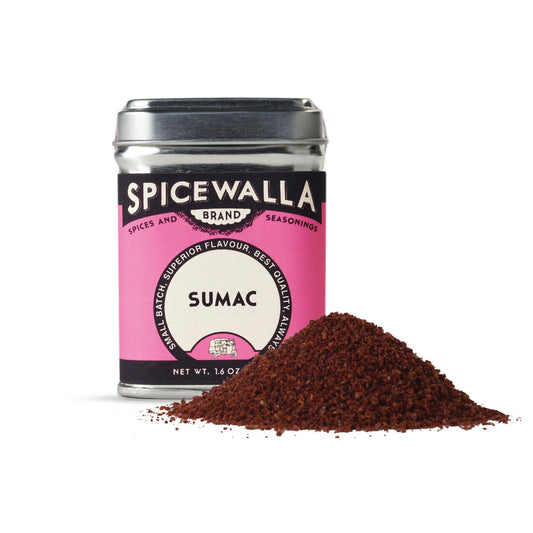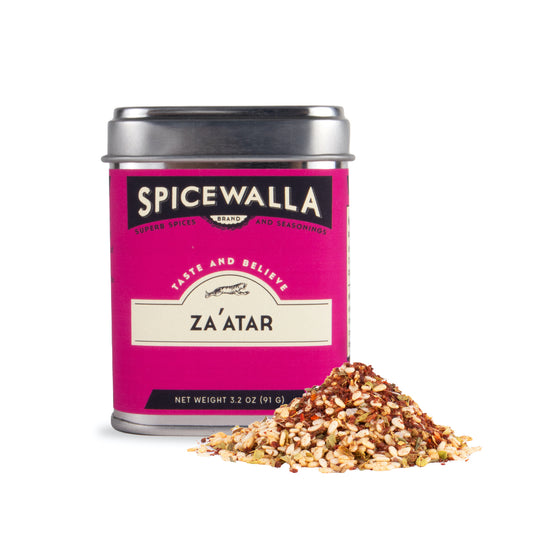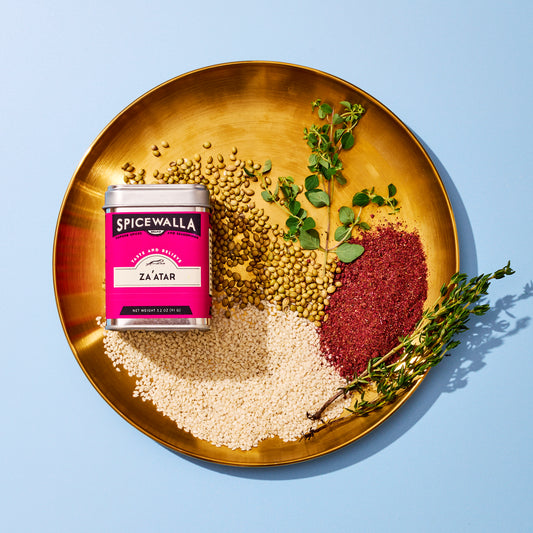This is a love story. About, arguably, one of the most underrated spices you should have started cooking with, like, yesterday—but, we’ll let it slide.
Sumac comes to ya from the berries of a wild bush that typically grows in the Middle East (hi, Spicewalla sumac!), Italy, and Mediterranean areas. This vibrant, flowering plant belongs to the family Anacardiaceae, along w/ cashews! Who-da thunk a nut and a spice were related? #mindblasted
Sumacs are considered to be among some of the prettiest plants in the wild; producing crimson red fruits nestled amongst spiraling leaves. This might be why they drew the attention of early Middle Eastern and Central Asian cultures, who turned the dried fruits into an oxblood-colored powder, used as a leather dye and garnish. It has a tart, wonderfully sour flavor, and stunning visual appeal when sprinkled over swirled plates of baba ghanoush or grilled flatbreads. Sumac is often used as a replacement for lemon, thanks to the tart, slightly sour flavor. In fact, before lemons were imported to Europe, the Romans used these berries to add a tangy taste to their meals.
Looking for an easy, full-proof recipe to start your new, intimate journey with sumac? Try “Red Lemonade.” — a sweetish, tartish, yummy (no ish!!) spin on your classic lemonade. Native Americans used to prepare a similar beverage known as sumac-ade. Just mix sumac, water, and sweetener of your choice! Or, if this sexy, good-lookin’ spice gives you the urge, make your move and add it to whatever you’re whippin’ up next! Many Middle Eastern cultures still prefer sumac to lemons and vinegar, keeping sumac in a shaker on their kitchen table to season favorites like chicken, hummus, and roasted veggies! Or, maybe, if you're looking for a spice blend option, we feature sumac in our Spicewalla Za'atar as well as our Green Za'atar. You can't go wrong throwing these on whatever cuisine your stomach desires!
What about sumac’s good-for-ya qualities? For starters, it’s high in antioxidants, and vitamins A & C. It’s been used to treat a wide array of ailments for centuries, dating as far back as medieval times. There are even some age-old quotes to back it up, “The seed of Sumach [sumac] eaten in sauces with meat, stoppeth all manner of fluxes of the belly…” (Gerard, 1597). If they were singing sumac’s praises back in the 1500’s, that’s a trend train we are hoppin’ on, friends.





